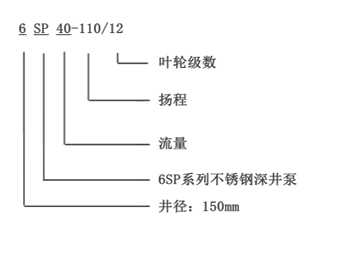Oct . 12, 2024 13:34 Back to list
High Efficiency Submersible Pump for Enhanced Water Flow and Performance Solutions
High Flow Submersible Pumps An Overview
Submersible pumps are essential devices used in various industries and applications, notably for their efficiency in moving liquids from one location to another. Among the various types of submersible pumps, high flow submersible pumps stand out due to their capability to handle large volumes of water or other fluids in a relatively short amount of time. This article will explore the functioning, applications, advantages, and considerations for high flow submersible pumps.
Understanding High Flow Submersible Pumps
High flow submersible pumps are designed to operate when submerged in the fluid that needs to be pumped. They are typically sealed in such a way that prevents any water from entering the motor, ensuring that the pump remains functional even when immersed. These pumps are powered by electricity and can move significant amounts of fluid—often rated in thousands of gallons per minute (GPM). Their design allows them to operate in deep wells, sumps, or other submerged environments.
The principle of operation for these pumps is based on centrifugal force. As the impeller within the pump spins, it creates a vacuum that draws fluid into the intake. The spinning action then forces the liquid through a discharge pipe, elevating it to the required height and transporting it to the designated location.
Applications of High Flow Submersible Pumps
High flow submersible pumps are utilized across a variety of sectors, including
1. Water and Wastewater Management These pumps are frequently used in municipal wastewater treatment facilities, where they help manage high volumes of wastewater and stormwater.
2. Construction Sites During excavation, high flow submersible pumps aid in dewatering efforts, removing excess water from trenches, pits, and other excavated areas.
3. Mining Operations In mining, these pumps are vital for draining excess water from mining pits and other areas, enabling safe operations and enhancing productivity.
4. Irrigation and Agricultural Applications Farmers utilize high flow submersible pumps to efficiently transport water from rivers, lakes, or underground sources to irrigate crops.
5. Flood Control During periods of heavy rain or flooding, these pumps can help manage and redirect floodwaters, protecting communities from water damage.
Advantages of High Flow Submersible Pumps
high flow submersible pump

The popularity of high flow submersible pumps can be attributed to several advantages
- Efficiency These pumps are designed to move large volumes of fluid quickly, making them highly efficient for applications where time is critical.
- Reliability With fewer moving parts exposed to the elements, submersible pumps can be more reliable than surface pumps, which may require more maintenance
.- Versatility High flow submersible pumps can handle various types of fluids, including slurries and mixtures, broadening their usability in different contexts.
- Space-Saving Being submerged means they occupy less surface space, which is especially beneficial in crowded or constrained environments.
Considerations When Choosing a High Flow Submersible Pump
While high flow submersible pumps offer numerous benefits, certain factors should be considered when selecting one for a specific application
- Pump Capacity Understand the flow rate required for your application to ensure you choose a pump that can meet those needs.
- Depth Rating Assess the depth at which the pump will operate, as this influences the required power and design of the pump.
- Fluid Characteristics Consider the type of fluid being pumped, as certain materials may require pumps made from specialized materials to resist corrosion or wear.
- Power Source Determine the available power source (electricity vs. diesel-powered) and select a pump accordingly for efficiency and convenience.
Conclusion
High flow submersible pumps play a vital role across multiple industries, providing efficient, reliable solutions for moving significant volumes of liquid. Their advanced design and operational efficiency make them indispensable in applications ranging from wastewater management to agriculture. By understanding their functions, advantages, and the critical factors for selection, organizations can leverage high flow submersible pumps to address their fluid management needs effectively.
-
Submersible Water Pump: The Efficient 'Power Pioneer' of the Underwater World
NewsJul.01,2025
-
Submersible Pond Pump: The Hidden Guardian of Water Landscape Ecology
NewsJul.01,2025
-
Stainless Well Pump: A Reliable and Durable Pumping Main Force
NewsJul.01,2025
-
Stainless Steel Submersible Pump: An Efficient and Versatile Tool for Underwater Operations
NewsJul.01,2025
-
Deep Well Submersible Pump: An Efficient 'Sucker' of Groundwater Sources
NewsJul.01,2025
-
Deep Water Well Pump: An Efficient 'Sucker' of Groundwater Sources
NewsJul.01,2025
-
 Submersible Water Pump: The Efficient 'Power Pioneer' of the Underwater WorldIn the field of hydraulic equipment, the Submersible Water Pump has become the core equipment for underwater operations and water resource transportation due to its unique design and excellent performance.Detail
Submersible Water Pump: The Efficient 'Power Pioneer' of the Underwater WorldIn the field of hydraulic equipment, the Submersible Water Pump has become the core equipment for underwater operations and water resource transportation due to its unique design and excellent performance.Detail -
 Submersible Pond Pump: The Hidden Guardian of Water Landscape EcologyIn courtyard landscapes, ecological ponds, and even small-scale water conservancy projects, there is a silent yet indispensable equipment - the Submersible Pond Pump.Detail
Submersible Pond Pump: The Hidden Guardian of Water Landscape EcologyIn courtyard landscapes, ecological ponds, and even small-scale water conservancy projects, there is a silent yet indispensable equipment - the Submersible Pond Pump.Detail -
 Stainless Well Pump: A Reliable and Durable Pumping Main ForceIn the field of water resource transportation, Stainless Well Pump has become the core equipment for various pumping scenarios with its excellent performance and reliable quality.Detail
Stainless Well Pump: A Reliable and Durable Pumping Main ForceIn the field of water resource transportation, Stainless Well Pump has become the core equipment for various pumping scenarios with its excellent performance and reliable quality.Detail
